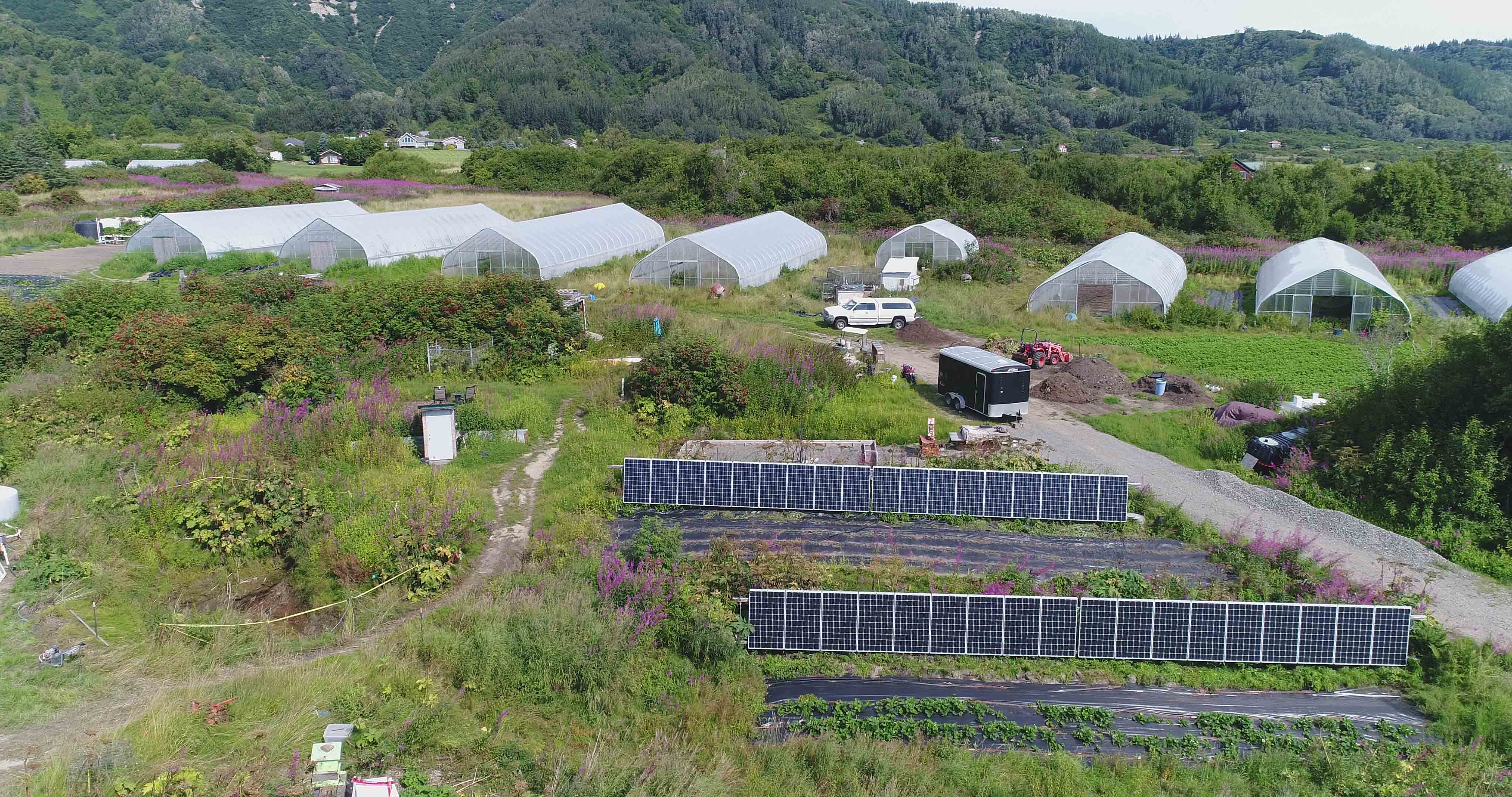Agrivoltaics Could Help Remote Communities Increase Solar Energy and Food Production

Land is often allocated for only one use. ACEP’s Chris Pike and a team of researchers from UAF, together with solar developer Renewable IPP and Alaska Pacific University’s Spring Creek Farm, are about to turn that idea on its head.
Agrivoltaics — the collocation of agricultural production and solar energy generation on the same land — aims to reduce barriers to utility- and community-scale solar energy deployment while maximizing benefits for farmers and local communities.
“We are excited to get feedback from community members on the adoption of multiuse solar farms,” said Pike. “This project will create agrivoltaic best practices in northern climates and find approaches to maximize solar energy production and minimize operations and maintenance costs.”
Pike and the team received an award for $1.3 million through the U.S. Department of Energy’s Foundational Agrivoltaic Research for Megawatt Scale (FARMS) program.
UAF’s project, titled “Agrivoltaics: Unlocking Mid-Market Solar in Northern Climates and Rural North America,” will investigate opportunities for farmers, mid-market solar power developers and rural communities to maximize shared economic benefits and efficient use of land for clean energy production and sustainable food production in Alaska.
The project will use expertise from UAF’s Institute of Agriculture, Natural Resources and Extension; APU’s Spring Creek Farm in Palmer, Alaska; Alaska solar developer Renewable IPP; and national clean energy financier CleanCapital. The study site is in Houston, Alaska, at an 8.5-megawatt solar photovoltaic array currently being developed by Renewable IPP. The solar array, once finished, will be the largest solar installation in the state. Four different high-value agricultural and food-bearing crops will be grown at the solar farm.
Jessie Young-Robertson and Glenna Gannon of the UAF’s Institute of Agriculture, Natural Resources and Extension will be, as part of this research, growing vegetable row crops, peonies, forage and native Alaskan berry species within the solar farm. Young-Robertson said they will be looking at how well the plants are growing based on their physiological functioning as well as their biomass.
"This project allows us to evaluate the feasibility of high-latitude agrivoltaics,” said Gannon. “It's also an opportunity for addressing high energy costs and food security for the state of Alaska."
By studying the combined usage of land for both solar energy production and agriculture, the project seeks to reduce land use conflicts and provide additional benefits to farmers, rural communities and the solar industry.
“Alaska Pacific University’s Spring Creek Farm is a working production and educational farm growing a variety of vegetables using sustainable practices,” said Ben Swimm, the farm manager. “We are excited to contribute to the important research being done at the Houston solar array by training agricultural technicians and advising on agricultural plot development.”
Pairing agricultural activities with mid-market solar power projects has the potential to lower the levelized cost of energy and provides a unique opportunity to expand deployment of solar energy production in underserved communities. If agrivoltaics can provide economic opportunity to both farmers and solar developers in Alaska, the opportunities for success in other locations are high.
For more information on the project, please contact Pike at cpike6@alaska.edu.
Many farms around Alaska have small solar arrays to offset their local electricity consumption. The FARMS awards will investigate the collocation of solar and agriculture on larger scales Photo by Amanda Byrd


